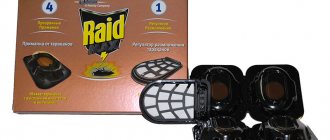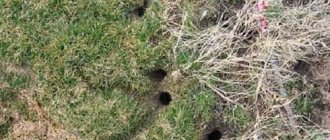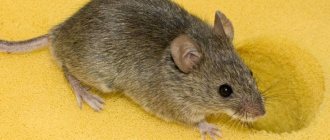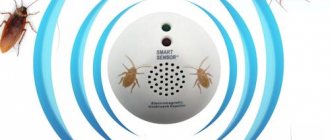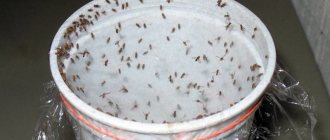The ferret is a carnivorous animal that feeds on birds, hares, eggs, small reptiles and amphibians. In the summer, when there is a lot of all kinds of living creatures in the forests and fields, ferrets prefer to live and hunt there. But with the onset of winter, especially cold, ferrets can make their way closer to human habitation and get food in barns and stables.
General characteristics of the predator
Ferrets belong to the mustelidae family of mammals. Ferrets have an elongated body and are particularly flexible and agile. These animals are excellent at climbing the tallest trees and digging deep holes. Males are slightly larger than females.
The habitats are very different, it depends on the type of animal. Ferrets often move closer to human habitation. There are usually two types of ferrets found in Russia - the steppe white and the forest black. Under favorable conditions, ferrets lead a sedentary lifestyle in their own territory. And only hunger can push them to human habitation, where there is always food for them.
The basis of any ferret's diet is food of animal origin. They hunt and eat birds, rodents, insects, reptiles and even poisonous snakes. A ferret will never miss a nest with eggs. He will drink them all and destroy the nest. Large individuals can become a real threat even to hares and muskrats.
Thanks to their agility and endurance, ferrets can pursue their prey for a long time. But, as a rule, they prefer to watch for prey near its own hole. The peak of hunting occurs at night, but if night hunting is not successful, the ferret will do it during the day. Ferrets are not attracted to plant foods.
Fox in the hen house
The fox is very cunning and acts according to its own special plan.
Getting to the chickens, she creates real chaos there. Amid the noise and uproar, she manages to eat or damage several birds .
It's not enough for more. Fighting a fox is much more difficult, but it is extremely necessary. In addition to material damage, it is a carrier of rabies. You can protect your homestead from the hunt of a cunning predator. To do this, you must meet some conditions:
- Do not use fish waste as fertilizer as it is very attractive to foxes.
- Do not leave containers and bags with food waste within reach for a long time.
- Fence the yard with a high fence made of chain-link mesh or boards.
- Remove large piles of manure from the area, which generate interest among foxes.
- Get a big guard dog. Foxes are afraid of huge dogs, but they don’t react to small ones.
Ferret lifestyle
Ferrets are naturally active, curious, and have an excellent memory. The latter quality is precisely what contributes to the fact that the predator will come again and again to the same chicken coop, where he has already successfully obtained food once. Hunting is not particularly difficult for a ferret, since by nature it has an excellent ability to swim, climb trees, run fast and dig the ground.
At the same time, in the wild, ferrets are very aggressive. They have their own enemies. For example, they are afraid of foxes, wolves, large snakes and large birds (owls, golden eagles). Thanks to their agility, ferrets often escape from being chased, and they also have a secret weapon. This is a special liquid that they spray during severe fright. Ferrets have special glands under their tail that produce this unpleasant-smelling liquid. This substance will scare away any enemy.
What does a ferret look like?
There are several varieties of this mammal, but they all have common features.
- The body is elongated and squat with short muscular legs.
- The fingers have long and sharp claws.
- The head is a neat oval shape on a long and flexible neck.
- A fluffy tail is a source of pride for an animal.
- Thick and soft fur, shiny in the sun, can be of different colors.
- The teeth are sharp and strong.
According to all these characteristics, the ferret is an attractive fluffy animal with the incredible ability to move quickly by jumping, deftly climb trees, swim wonderfully and bite well.
Ferret habitat
The ferret is a predator. It settles almost everywhere, but prefers to live on the edges of the forest, so that there is a body of water nearby. Ferrets live in burrows that they make themselves, or they occupy burrows made by other animals and abandoned by them.
The ferret is difficult to find in dense forests; the animal does not like too dense forests. Animals prefer small forests or groves located near human habitation. The ferret does not like to wander from place to place. This is what distinguishes males: each of them has its own strictly defined territory and it is extremely undesirable for them to appear in a foreign area. Females are more loyal in this regard: they can live anywhere and not feel much discomfort. A male can walk about 5 km per night - this suggests that their hunting grounds are very extensive.
Ferrets' burrows are not very deep, usually there is one tunnel and a nesting site at the end. Ferrets can make their shelters in abandoned burrows of badgers and foxes. Sometimes a ferret settles right next to a person. Here he will probably have a nest in some barn, but in a secluded place. Usually, forest ferrets climb into barns, because steppe ferrets try to avoid human habitation.
The steppe ferret lives almost in open areas. In terms of area of settlement, the steppe ferret surpasses any other steppe animal. In the steppes, ferrets make abandoned gopher burrows for themselves. Such a hole can save the animal from both the summer heat and the winter cold. There is no way to live without a hole in the steppe: you can easily become the prey of another, larger predator. Steppe ferrets do not have a strictly defined territory.
Everything happens at night
Ferrets, weasels and minks usually hunt in the middle of the night (however, weasels are not above visiting chickens in broad daylight). Their behavior can be compared to a wolf looking out for a flock of sheep. The predator necessarily destroys all the birds, but he can only feast on one. If you suddenly find a rodent on your territory, do the following:
- Throw a heavy piece of clothing over the animal. A raincoat or coat would be perfect. Then lightly crush the predator, wrap it up and throw it into the cage.
- Be sure to wear thick gloves when catching an animal. If he does manage to bite you, pinch his nose by inserting a piece of wood between his teeth.
What to do next with the caught ferret, weasel or mink is entirely your decision. You can kill the rodent or take it away from your property into nature, and then release it into the wild.
Vital signs of a ferret in the barn
Conversations that a ferret can destroy many chickens in a barn in one night are not groundless. This is true. Once in the barn, the ferret begins to hunt. Moreover, he does not eat the whole of a single caught chicken. He strangles them one by one and drinks their blood, partially eating them. This is a harmful trait in ferrets. Moreover, having entered into the excitement of the hunt, the ferret will not be afraid even of a large turkey or goose. However, there are some signs by which ferrets reveal themselves even before the destruction of the bird. They can be found if you carefully monitor the behavior of the barn's inhabitants.
These signs include:
- Chickens show unusual timidity: they huddle together on the upper perches, and are in no hurry to go down even when the owner gives food. This can only mean one thing: they have already sensed that a predator is wandering somewhere nearby. This sign can be 100% confirmation that there is a ferret somewhere nearby.
- The unusual crowding of birds indicates that they are very frightened.
- Even at night in the dark you can hear screams. With its sensitive hearing, the bird hears the predator’s attempts to get inside, so the noise immediately begins. Even the appearance of a person does not stop this alarmed cry.
- If it is winter, then you can easily find characteristic footprints in the snow. Experts can already understand from the tracks that a ferret has been in the chicken coop or has just tried to get there.
When the ferret has already been in the barn, it will not go unnoticed. Smothered chickens can be found everywhere. The ferret first drinks blood and eats the head and paws of the victim. Already in the presence of the above-described signs, measures need to be taken, since any night the ferret can get inside - it’s just a matter of time. If alarming signs appear, the chickens should be removed to a safe place and measures should be taken to get rid of the ferret. If the ferret has already killed the bird, a new one is not introduced until the predator is caught.
Signs of uninvited guests
Typically, a ferret in a chicken coop behaves like a wolf in a sheep herd. He destroys all the chickens, while the animal can only eat one.
If, when you enter the chicken coop in the morning, you see that the chickens are in no hurry to leave their roosts, this is a sure sign that a night guest is visiting the poultry house. If you do not take appropriate measures, then one fine morning you will find all the laying hens dead and with their heads chewed off.
If, when you enter the chicken coop in the morning, you see that the chickens are in no hurry to leave their roosts, this is a sure sign that a night guest is visiting the poultry house. If you do not take appropriate measures, then one fine morning you will find all the laying hens dead and with their heads chewed off.
This is the handwriting that is typical for weasels and ferrets. By destroying domestic chickens, the ferret tries to provide himself with supplies; he already considers your chicken coop his own. Therefore, even if you get chickens again, there is a very high probability that this predatory animal will again visit its favorite territory. To be sure to get rid of a predator, it must be caught and destroyed.
The peculiarity of the ferret is that, having entered the poultry house and seeing an abundance of food, the animal can destroy all the chickens in one night, although it is not able to eat so much prey.
This feature of the animal is especially harmful. In the excitement, a marten or polecat can kill even large birds - geese, turkeys. There are signs that make it possible to determine the presence of a predator near the poultry house before the first victims appear.
The animal’s attempts to enter the chicken coop are evidenced by the following:
- Chickens do not leave their roosts in the morning - the frightened bird sits on top, even when the owner comes in and pours out food. This behavior occurs when a predator is near the house.
- Chickens huddle on the highest perches and even in very crowded conditions refuse to sit lower.
- Poultry screams in the chicken coop at night - when they hear a ferret trying to get inside, the chickens wake up, start screaming, and make a long noise. When the owner appears, the bird does not calm down.
When there is a suspicion that a ferret has appeared near the chicken coop, immediate action must be taken. The very next night the bird can be completely destroyed. A trap is immediately placed on the predator, and the bird is transferred to a safe place, inaccessible to the uninvited guest.
The ferret leads an active nocturnal lifestyle. Therefore, you can catch him red-handed only in the dark or in the morning, observing the behavior of the birds, if they survived. If you enter the chicken coop and the birds do not leave their roosts, you can assume with 100% certainty that unwanted guests came to them at night.
If the chickens are chained to their roosts in the morning, we can assume that a ferret was wandering around the chicken coop at night
Ferret danger
It is precisely in the fact that the destruction of birds is usually massive that the main danger of the ferret lies. Even if he doesn’t destroy everyone at once, he will return to his beloved barn again. If something frightens him one night, he will still come the next night. A small hole is enough for a ferret to get inside. The peculiarity of the skeleton is such that if the head penetrates, the ferret will crawl through completely.
Even rats are not as dangerous as ferrets. There are cases when there were aggressive roosters among the birds and they could destroy the predator themselves, but such situations are very rare.
Important! The ferret attacks aggressively, in one leap. He strangles the victim with his paws, and then begins to suck the blood.
The greatest danger is that if the ferret is not caught, he will never forget the way to the hen house.
What baits are there?
In order to feed it poison, the rat must be attracted. And the more tempting the bait is, the faster the rats will eat it. We have already noticed that these are very smart and careful animals. Therefore, before you give them bait with poison, you need to let them get used to it and understand that the treat is safe. To do this, feed the rats for several days without adding chemicals. And only by lulling their vigilance can toxic substances be added.
Various types of baits
Some products already include ingredients that are attractive to rats: grain, flour or sugar. Some are supplemented with flavorings: cheese, meat, vanilla. Others should be used as a supplement to foods. To do this, they use treats that are attractive to rodents, such as:
- bread crumbs soaked in unrefined sunflower oil;
- boiled porridge;
- minced meat (with onions);
- corn;
- cheese;
- crumbled eggs;
- smoked lard;
- roasted sunflower seeds;
- dry cat or dog food.
Minced meat with poison
How to protect a bird from eating poison
You can’t explain to the legal inhabitants of the chicken coop that baits and poisons are for rodents only
To protect birds from poisoning, the following precautions must be observed when working with chemicals:
- Temporarily transfer the birds to another location.
- Place baits with chemicals in special traps that chickens and chickens will not get into, for example, boxes with several entrance holes on the sides.
- Constantly remove rodent carcasses.
- Place poisons (2-3 grams of mixture per hole) deep into rat holes, sprinkle with earth.
- Use a granular product to avoid spraying it throughout the coop.
- Do not spill chicken feed near scattered baits.
- If possible, place a house for chickens to spend the night outdoors (on legs).
Chicken coop on legs
Ferret habits
In order to more successfully fight the enemy, you need to study his habits. Ferrets in this case are no exception; a person must know the characteristics of this predator in order to more effectively combat it. In particular, there are two unusual habits:
- The ferret will staunchly defend its territory, and it does not matter at all what kind of enemy invaded it. Having lost its territory, a ferret can quickly say goodbye to life, since it will have nowhere to hunt and hide.
- Ferrets have a naturally weak heart. It happens that a predator caught in a trap dies from an excessive release of adrenaline into the blood - its heart simply cannot cope with such a load.
How to make a trap with your own hands
In winter, you can make a destructive trap for your ferret with your own hands. To do this, pour water into a ten-liter bucket and leave it in the cold. When ice forms, a hole with a diameter of 10 cm is drilled in it. It should not be through. Chicken blood is poured into the bottom. The pest will smell the blood and crawl into the drilled hole, but will not be able to crawl back out. In such a trap, the pest will die from suffocation.
As you can see, getting rid of ferrets in a chicken coop is not an easy task and not everyone can solve it. Therefore, if you cannot cope on your own, you can always turn to a special service for help. Real professionals are ready to save the farmer from the troubles associated with this animal.
Traps
Any device for catching a ferret must be installed at night; this is important, given the nocturnal lifestyle of this predator. The traps must be placed so that the bird cannot fall into them even when panic begins in the barn due to the appearance of an uninvited guest.
Before loading the trap, it should be treated with a special composition that will destroy the repellent human odor. This can be slaked lime or even ordinary manure. If the dug hole is already clearly marked, then the trap is placed right next to the exit from it.
The trap should be sensitive and bait should be placed there. It could be bird blood. You can also catch ferrets using a strong rat trap; it can deter the predator. In order to give the rat trap additional weight, it needs to be mounted on a large board. It is better not to place small rat traps: the ferret will turn them over and easily free himself, and subsequently it will be easy to bypass such traps.
What is the basic description of the animal?
The ferret is a nocturnal predator. Dangerous for chickens and geese. The representative is not able to carry away heavy prey, so half-eaten carcasses remain in the poultry house.
The body length reaches 40-45 cm. The animal has an aggressive attack style. The representative sneaks up on the victim unnoticed and strangles him with his paws. After the strangulation, the meal begins. For dessert, the predator leaves small chickens. The basis of the diet is chickens.
The animal is greedy. The predator destroys more birds than it can eat. Dead birds are not suitable for further use, much less sale.
Pets
Cats and dogs can handle a ferret in some cases. And even if they don’t catch the predator, at least they won’t let him run the chicken coop in peace. Not every cat or dog can manage to catch a nimble ferret, but sometimes they succeed. Hunting dogs and cats that crush rats are good in this regard. Such animals are not afraid of predators; hunting is a natural process for them. Such pets must be vaccinated against rabies.
But, unfortunately, not every pet is accustomed to hunting: in most cases, the animal itself will be afraid of the predator. A good option against predators is domestic ferrets. On their territory they can catch and kill a wild animal. Poultry is of no interest to domestic ferrets, since they do not suffer from hunger. But even a pet should not be allowed into the chicken cage.
Using repellers
The modern market for protection against various pests offers high-quality repellers that emit low-frequency ultrasonic waves. The predator does not like them and does not allow him to come close to the chicken coop.
There are also ferret repellent devices on the market that emit sound and light signals. As soon as the animal approaches the area, the device will immediately turn on, begin blinking and make sounds. As a result, the ferret will be scared and will not approach the chicken coop. These devices are powered by rechargeable batteries that need to be charged regularly.
Homemade trap
In order to quickly take measures to catch a predator in the chicken coop, many farmers make homemade traps. These include:
- A bucket/box raised above the ground at one end, under which a support is placed. Some kind of bait is placed under it that can attract the ferret. The effect is designed for the ferret, interested in the bait, to knock down the support and be covered with a bucket or box. This simple method is quite productive, but there is one significant drawback: the ferret can get out of there. It costs him nothing to turn the bucket over.
- A cage with a vertically falling door. The mechanism is also quite simple: the door is connected by a rope to the bait, and as soon as the ferret begins to engage with the bait, the door falls. In order for a predator to come to the bait, you need to put a piece of meat dipped in blood.
Such methods are effective. But after the ferret is caught, no less caution should be exercised. First of all, this is due to the fact that ferrets are often carriers of rabies. You need to be very careful when removing them from the trap. They have powerful jaws. It is not difficult for them to bite through the skin and joints. Therefore, you need to act in thick mittens or gloves that cannot be bitten.
If the bite could not be avoided, and the ferret tightly clung to the hand, it should not be torn off. You need to try to pinch his nose and then insert a stick between his teeth - you can then use it to open his jaws.
Important! After being bitten, you must go to a medical facility and get vaccinated against rabies. The animal must be sent to a veterinary laboratory.
If a ferret is caught in a trap, a person is faced with the question of whether to kill it or release it. Here everyone is free to do as they please. But if the idea arises of releasing the predator, it must be taken as far into the forest as possible so that it cannot return.
How to get rid of weasels and ferrets
The ferret is a very cunning and cautious animal; in order to catch it, you will have to make every effort. It is much easier to prevent its occurrence. To do this, it is recommended to install the chicken coop on a pile foundation.
It is recommended to fence the adjacent area with a fine-mesh mesh, digging it into the ground at least 50–70 centimeters. The walls in the chicken coop can be lined with sheet iron from below.
If the animal has already trodden the path to your poultry house, you need to take more radical measures.
Installation of traps
Ferrets and weasels usually bypass placed traps, so predators need to be interested. You can scatter bird feathers in a trap, if the predator shows curiosity, you will be able to catch it.
It is best to place a dead chicken as bait and place traps around it. On the way to the prey, the ferret will bypass all obstacles, but having taken the bait in its teeth, the predator usually backs away, so it can get caught in one of the traps placed.
It is necessary to set traps only with gloves; in addition, it is recommended to smear the trap with manure or keep it in spruce decoction for some time, this will help rid the trap of human odor.
Among the disadvantages of this method of catching a predator, I would like to emphasize that ferrets, like real spies, rarely follow the same route. Therefore, it is quite difficult to predict the location of the next appearance of a predator in the chicken coop.
Pets
Given the ferret's sensitivity to odors, it makes sense to place a dog house next to the coop. The dog is unlikely to be able to catch an agile animal, but its very presence and smell can repel a ferret or weasel from your summer cottage.
For the same purpose, the walls in the chicken coop can be decorated with goat skins. Goats have a sharp and specific odor, and the aroma of its skin will mean danger for the ferret.
Homemade devices
You can try making a trap yourself. To do this, take a box or bucket, place a stop under it, and place the bait. Having become interested in the bait, the animal knocks down the spacer and finds itself in a trap.
It is necessary to clarify that this method is not always effective. Firstly, the ferret may not be interested in the bait and will prefer the chickens.
Secondly, your presence is necessary. Even if caught in a trap, the predator will fight for its life to the last, and if you don’t arrive in time, most likely it will be able to escape.
Repellers
If you do not set yourself the goal of catching a night visitor, but simply want to ward him off, then you can install an electronic repeller in the chicken coop.
The device emits low-frequency signals that cause panic in predators and they try to leave the dangerous territory as quickly as possible.
An alternative to such a device may be a flashlight equipped with a motion sensor. When an animal approaches, the sensor is triggered and the flashlight produces sound and light signals.
Traditional methods
You can coat the walls of the chicken coop with tar. This method has been used in villages for a long time. But the effectiveness of this method can be debated. After all, an animal can make a tunnel or enter the poultry house through the roof. In addition, there is no guarantee that the smell of tar will scare away a ferret or weasel.
You can fight weasel using all the methods listed above. Weasels and ferrets are very similar in their habits, so the same methods of dealing with them are used.
It doesn’t matter what method you choose to catch a ferret or weasel, the main thing is to do it as quickly as possible. By the way, the further fate of the captured animal will depend only on you
You can try to tame it, but it is best to take the predator away from human habitation and release it.
Repellent
In order to discourage the ferret from visiting the chicken coop, you can use repellers. These are devices that create an uncomfortable environment for predators:
- Electronic devices operating on the ultrasound principle. If such a device is turned on in the room, the predator experiences panic and its only desire is to escape as quickly as possible. He will panic until he leaves the area covered by the device. The uniqueness of such devices is that other animals and birds do not experience the slightest inconvenience from their operation, just like humans. But there is a drawback here: ferrets quickly get used to such inconvenience and cease to feel fear.
- Low frequency repellers. The devices were developed in such a way that predators would not develop addiction. But this device also has a drawback, and a significant one: animals and birds located in its area of action experience severe stress from its influence.
- Light repellers with motion sensors. The action is simple: when a predator appears, the motion sensor is triggered and the flashlight turns on. The ferret, frightened by the bright light, runs away from the chicken coop. There is also a drawback here: the motion sensor covers a certain area. If the ferret does not hit it, the sensor will not work.
How to set up a chicken coop
To keep predators out of your chicken coop, you need to make sure it is strong. We will share with you some tips and rules that will protect your building from attacks by ferrets:
- The base of the chicken coop should be filled with concrete, then the animal will not be able to dig a loophole.
- If cracks appear on the walls of the structure, the animal can easily get inside.
- The ferret is distinguished by special dexterity and dexterity. The floors can be made of tin. Cover them with sheets of tin. If an animal can make a tunnel, then it still won’t get into the chicken coop itself.
- If the building is quite ancient, then it will not be possible to make a concrete base without damaging the walls.
Then you can dig a fine protective mesh around the structure. The digging depth is half a meter.
Traditional methods
Previously, people tried to fight predators from the forest on their own and used improvised means for this:
- The walls of chicken coops were smeared with tar; it was believed that this smell should repel small pests, like ferrets. But if an animal comes from a tunnel underground, then the walls coated with tar will not become a hindrance for it. In addition, not every ferret dislikes the smell of tar.
- It used to be that goat skin was used to repel ferrets. But this method can rather be attributed to preventive measures. If you hang the skin in a sealed room, it may have an effect.
How to fight a pest using a trap
The farmer must place traps on the plot. The device is pre-treated with special solutions to remove the smell reminiscent of human presence and not scare off a predator.
To catch the pest, you can set a trap
To eliminate human odor, you can choose:
- manure;
- dried lizard skin;
- slaked lime;
- spruce needles for digestion.
After processing, the trap should be handled only with thick fabric gloves. Otherwise, all preliminary preparation will be pointless. The structure is placed near the entrance to the burrow.
It is better to purchase several trap options at once. One of the structures is placed directly in the poultry house. To do this, hang the carcass of a dead chicken on the wall, and place a trap under it.
The trap is set daily until the pest is destroyed.
Chemicals
Poison baits are another way to control ferrets. In order to prepare them, you need to use protective equipment - a mask and gloves. As bait, you can use the same carcasses of hens and chicks that the ferret has already killed. They should be placed where chickens and other domestic animals cannot reach them.
To prevent the bait from going rotten, you need to treat it with compounds containing substances that promote mummification. A strong poison for baiting rats is suitable as a poisonous filling. Such products can be found on sale in the form of liquid formulations or dragees, as well as lozenges. To lure them, they are provided with a strong smell, to which the ferret will probably not remain indifferent. The disadvantage of this method is that even if the ferret has already been destroyed, the person will not know about it. Most likely, the poisoned animal will run back to its hole and die there.
Who strangles chickens at night: what predators hunt birds?
Frequent guests in the chicken coop are:
These are cautious animals and are rarely seen by humans. This is why it is so difficult to find out who is strangling the chickens in the chicken coop at night. After visiting them, they usually see the following picture: feathers scattered around the area and poultry house, half-eaten chicken carcasses from which the blood has been drained.
On a note! Animals visit farms most often in the autumn-winter period, when it becomes more difficult to find food in the forest. Predators often settle near human habitation.
Sometimes weasels and martens are beneficial. They, like domestic cats, hunt rats and mice, which often live in the chicken coop. Rodents steal eggs, choke chickens and carry diseases dangerous to birds and humans.
Rats in the chicken coop
Signs of a weasel and ferret
Ferrets and weasels are dangerous animals; they kill all the animals in the barn by strangulation, and take only one with them. If they start eating in the chicken coop, it means they won’t leave until the food runs out. If you get hens again, predators will quickly deal with them, since they consider the chicken coop their source of food.
Signs of a predator visiting a poultry house:
- Concerns about chickens.
- Ruffled feathers.
- Chickens are in no hurry to leave the coop.
- The appearance of dead chicken carcasses with their heads chewed off and blood sucked out.
This behavior pattern is typical for weasels and ferrets. To get rid of the pest, you will need to catch it and destroy it. Otherwise, you can lose all the chickens, and subsequently the geese and rabbits.
How to Protect Chickens from Ferrets and Weasels
The weasel kills chickens quietly, so it is difficult to catch it in the act. It is much easier to prevent its occurrence.
Mechanical prevention of the appearance of predators and pests can be carried out:
- Do not leave food in the feeder for a long time.
- Do not store grain reserves in the chicken coop.
- Raise nests off the ground.
- Seal cracks and holes in the walls and foundation with cement mortar.
- Dig sheet metal or fine mesh around the chicken coop.
Farmers recommend against using traps due to the high risk of injury to chickens. However, in cases where this cannot be refused, you need to think about their location so as not to catch the hen.
Setting traps: how martens steal and kill chickens
As a rule, ferrets, weasels and martens avoid traps, so it is necessary to interest the animals. Bird feathers can be scattered in and around the trap. The predator will show curiosity and can be caught.
How to install a trap:
- It is best to use a dead animal as bait. Traps are placed on the way to it.
- You cannot handle the trap with bare hands; you must use gloves.
- To rid the trap of human odor, lubricate it with manure or soak it in spruce decoction for 2–3 hours.
The difficulty with this method is that the animals never walk the same route twice. It is almost impossible to predict the direction of movement, so catching a weasel or marten will be difficult.
Pets
The natural enemies of martens, ferrets, and weasels are dogs and cats. Not all, some animals do not know how to catch and are even afraid of wild animals. Therefore, it is better to have several cats and dogs.
Domestic predators will help get rid of pests, but there is always a risk that they will start stealing eggs and crushing chickens. Certain breeds of dogs can catch furry predators, but they need to be trained to do so. Animals will quickly help you find out who is stealing chickens and hens.
These breeds include:
To prevent wild animals from approaching the utility block, you should install a doghouse next to it. This will help not only scare away the predator, but also catch it if it dares to come closer.
Advice! Some farmers recommend leaving a light on in the poultry house at night, you can even turn on the radio. This will create the effect of presence, so wild animals will be afraid to come close.
Repellers
Ultrasonic equipment is one of the most progressive and humane ways to repel predators and rodents. The principle of its operation is the targeted irritation of the animal’s sense organs. This sound causes them anxiety, fear and discomfort.
Ultrasound against pests
Ultrasound also scares moles and mice. If chickens are kept in the same room as rabbits, it is better to refrain from using the device.
When purchasing an ultrasonic repeller, you need to pay attention to the range of action; it should be enough for at least the perimeter of the chicken coop. The most popular models are: Electric Kot, Clean House, Grad-A and Pest Reject
Preventive actions
It is difficult to fight a ferret, so you need to take all measures to protect the chicken coop from the visit of a dangerous predator:
- The chicken coop needs to be sealed. It is advisable to take care of this already at the stage of its construction. Then you can build a special monolithic concrete foundation; you need to lay sheets of iron under the boards. The inside of the chicken coop walls can be covered with metal mesh, and all cracks can be securely sealed with cement and broken glass.
- Particular attention should be paid to ventilation - a ferret can easily penetrate through it. Therefore, at the construction stage, it is necessary to lay ventilation holes no lower than at a height of 2 m from the ground.
- Make secure doors to the chicken coop that close tightly at night. This is the easiest way to access this room. In the summer, chicken coops are often not closed, and the ferret gets inside without hindrance.
- There should be no piles of unnecessary rubbish in the chicken coop - this is an excellent hiding place for a predator. Even during the daytime he can easily hide there. Every corner of the room should be clearly visible, this minimizes the likelihood of an ambush for a predator. Any piles of rubbish both indoors and around it on the street are an excellent opportunity to hide for a nocturnal predator. He can even arrange a temporary shelter for himself in a pile of old boards or in the trash. At night he will get out of there and operate in the courtyard.
- The chicken walking area should be surrounded around the perimeter with a concrete fence, which is buried about half a meter into the ground.
How to keep chickens safe in the future
A properly equipped poultry house will be a reliable barrier for ferrets. Such premises are best equipped on a foundation. If this part of the building was not originally provided for, you need to fill the blind area around the perimeter of the chicken coop. This will reduce the risk of the animal forming a tunnel. It is advisable to cover the floor inside the chicken coop with metal sheets. It is necessary to replace rotten boards and seal all the cracks and cracks in the walls.
If the roof is gable with an attic, you need to make sure that the door leading to it is closed with a reliable latch that the ferret cannot open. A fine-mesh mesh should be dug in around the perimeter of the chicken coop to a depth of 50 cm. The door must be equipped with a lock and the house must be locked at night. It is recommended to coat the walls of the room with tar.
To make the chicken coop less attractive to ferrets, you need to clear the space around it from any debris, piles of firewood and other elements where the animal can hide while making its way to its prey.
Other predators
In addition to ferrets, other living creatures can enter the chicken coop or buildings in the yard:
- Weasel. The principle of her hunting is approximately the same: she can easily penetrate through the smallest hole or make a tunnel. She can hunt at any time of the day. The chickens' behavior is the same as after a ferret's visit. But there is one difference: after the victim is strangled, the weasel tears it apart. It is almost impossible to catch a weasel. She is cunning and agile, and also merciless. The weasel is a rare guest in the chicken coop. Only severe hunger could push her to take such a step. There are cases where weasels even attacked dogs and cats. Of all the predators that parasitize chicken coops, weasels are the most ferocious and aggressive. But it must be added that even after getting into a chicken coop, a weasel will extremely rarely immediately begin to strangle the chickens. First of all, her attention is attracted by the rats and mice that live there. Only if they are not there, and hunger cannot be satisfied in any other way, will the hunt for chickens and other living creatures begin.
- Marten. The method of penetration into outbuildings is exactly the same as in previous cases. The marten is also a nocturnal guest. But unlike the ferret and weasel, after strangling the victim, it will eat it whole. The marten does not always come to farmsteads due to severe hunger. Often she will simply visit there if there is a suitable yard nearby with easy access to the chicken coop. In addition to animal food, the marten also eats some fruits and berries. Perhaps that is why she does not carry out massacres in chicken coops, but kills only as many birds as she can eat at one time.
- Fox. Ventilation holes, rotten boards, tunnels - all these are used by the fox to get into the chicken coop or rabbitry. Fox activity near humans is observed only in winter, when there is catastrophically little food in the surrounding forests. Foxes come to the farmstead at night or in the morning. The animal is capable of completely eating a couple of chickens, but it will strangle the rest. He may also take a couple of pieces with him and return several more times for his prey.
A guard dog, large enough not to be afraid of the predator, can be a good defense against a fox. In addition, the dog must be smart and trained so as not to start hunting chickens itself. In addition to chickens, a fox may be attracted to the site by the presence of buckets of slop, manure heaps, and the smell of fish - this is the most favorite aroma for foxes. Therefore, if foxes live in your area, you need to carefully monitor the accumulation of food debris in the area so as not to attract a predator.
Methods for controlling ferrets and weasels
The following methods will help save chickens:
- Traps;
- Electronic repellers;
- Traditional methods;
- A trap made from improvised means.
Trap
For such cautious animals as ferrets and weasels, one trap will not be enough. You will need several traps, because these animals know how to deftly bypass them. Feathers or a chicken carcass will help reduce the vigilance of predators.
Bait is placed in one of the traps, and several more traps are placed along the way to it. Smart animals will bypass all the traps, grab the prey in a trap with bait and begin to back away. At this moment the trap will work. The method, of course, is not the most humane, but the most effective of all existing ones.
Traps must be installed in compliance with certain rules:
- Use gloves and do not touch the trap with bare hands, as animals will immediately smell a person and will not approach the traps;
- Place traps in different places each time, as predators constantly change their hunting routes.
Repellers
Unlike traps, this method is more humane. You won't be able to kill a ferret using a repeller, but you can stop the predators' interest in the house. The operation of electronic devices is based on low frequency pulses. In animals they arouse feelings of anxiety and panic. Naturally, the predator will leave the dangerous place.
A successful alternative to an electronic repeller would be a flashlight equipped with a motion sensor. Install a light fixture with a sensor in the coop. When a weasel or ferret appears, it will give sound and light signals that will scare the animals away.
Folk remedies
Farming practice is rich in effective methods of scaring away small predators from poultry houses. One of these methods is the use of tar; it is used to treat walls in poultry houses. To enhance the effect of tar, undressed sheep or goat skins are hung in the chicken coop. The persistent animal smell can scare away predators of the mustelid genus.
For the same purpose, a dog house is installed near the chicken coop. Small animals are not afraid of dogs, but the smell of a dog and loud barking can discourage you from visiting the chicken coop.
Please note that predators of the mustelid family do not tolerate strong odors and loud sounds, and also react to flashes of light at night. Use these features to protect your poultry
A trap made from improvised means
You can try to catch small pests with your bare hands, although this is quite difficult. Equip yourself with patience, a thick blanket and thick gloves, and then settle into the coop for the night.
When a predator appears, throw a blanket over it to keep it down and then place it in its cage.
You will need protection for your hands, because the animal is resourceful, has sharp claws and equally sharp teeth. If a ferret or weasel nevertheless managed to bite the hand, pinch the animal’s nasal passages, and when it opens its jaw a little, insert a piece of wood and free the hand. Be prepared that during the operation the animal will emit unpleasant odors from the glands located in the anal area.
You can build a trap yourself from an ordinary bucket or a strong box. The bucket or box is placed on its edge and supported with a stick for support. Bait is placed under a bucket or box - feathers or a chicken carcass. Interest in the bait will force the uninvited guest to approach, the stop will fall, and the animal will be locked up.




